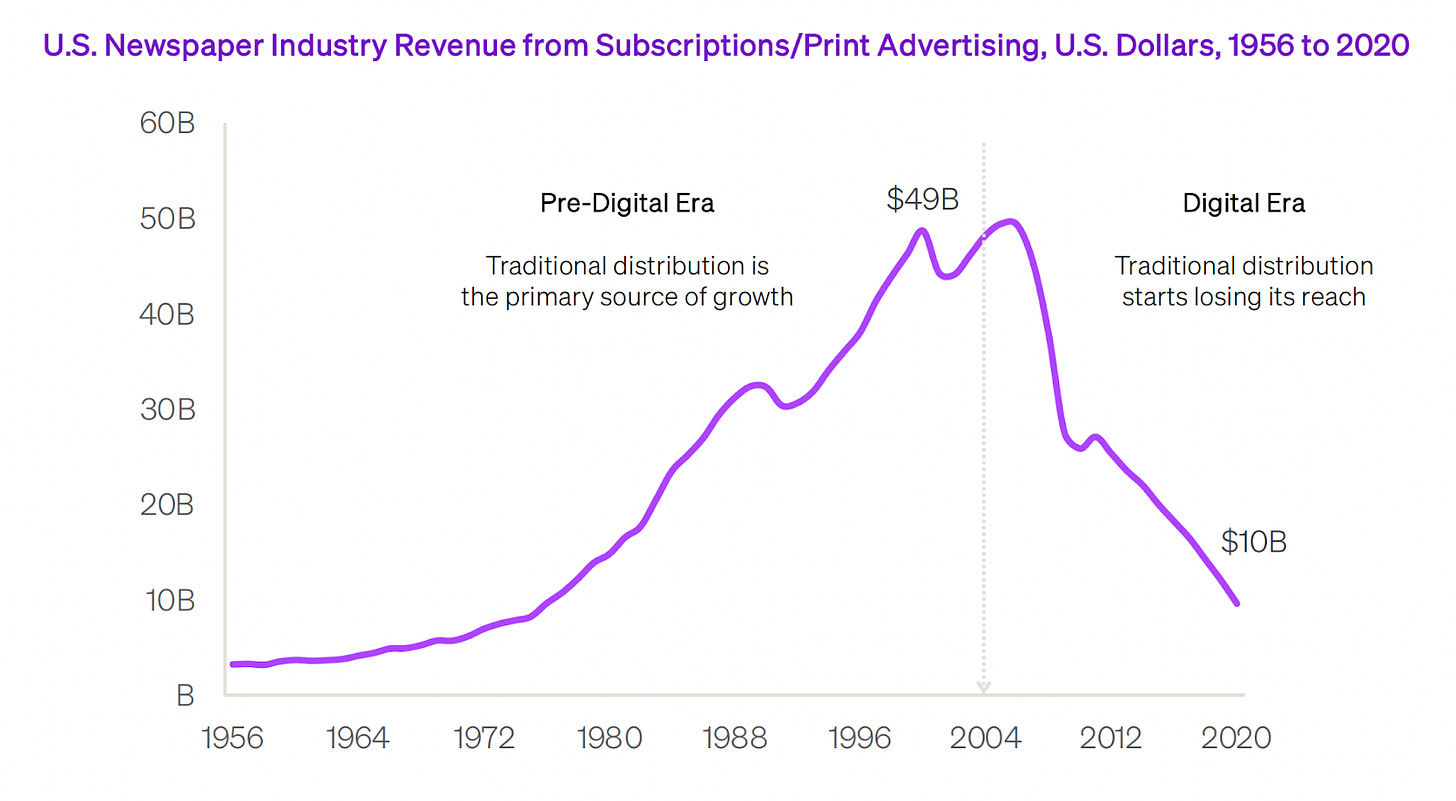After the team and I published our Deep Dive on the Media Landscape, I spoke to Jason about journalism and the evolution of media. Here’s our conversation.
Chamath: You’ve often spoken fondly to me about the ‘Golden Age’ of journalism. What was that period like?
Jason: I came into the media business as an outsider during the end of the Golden Age of journalism, which was during the 90s.
This was a period of time where a journalist could make $1-$5 per word to write an article. I remember writing a piece for New York Magazine where they paid me $2 per word. At the peak of this golden age, I was being paid maybe $3 per word.
So if you consider just the economics of words at that time – my loft in Manhattan was $1,800/month. So I could write a 1,000-word piece and pay my rent with that.
Just think about the luxury of that moment of time in New York.
And if I were to work as a stringer for WIRED Magazine or one of the Condé Nast magazines, they were paying $10,000 to $20,000 for a feature story. So this was an extraordinarily well-paying career, which meant it attracted a certain group of talented and elite people, like Bret Easton Ellis, who wrote Less Than Zero and those kinds of books.
Publishers were going to writers and saying, “Do a profile of this artist, musician, actor, director, business person… Here's $20,000.” The economics of those businesses still worked then.
Chamath: Obviously, with the internet driving the cost of distribution to zero, words have become more of a commodity, even more so with the emergence of GPTs. Maybe the average cost per word today is much less than 1¢? But I don’t think this applies to top writers. It’s just that the bottom has fallen out with your average writer.
Jason: Exactly. Back then, if you hit the top peak of success, you were rich enough to have a summer home. Like you said, that’s still the case if you’re a top writer today.
The key difference is that back then, the frontline of writers – the soldiers – they made a solid living. There were lots of jobs at a newspaper that paid $60,000-$80,000/year. Even if you worked for a trade publication, you could make $50,000/year and you could live in Brooklyn in a $1,000/month apartment, no problem.
Chamath: So how did the bottom start to fall out with what we now call ‘traditional media’ or ‘mainstream media’?
Jason: During the Golden Age of journalism, you had all these newspapers and magazines that were just getting fatter and fatter over time.
We used to have classifieds in print newspapers and that classifieds business might represent ~30% of revenue of Newsday or The Village Voice or the New York Post. And print newspapers had these little sections in the back where people would pay up to $250 for an ad.
And then you had these newsstands where people would get on a train and they would commute and buy a couple of magazines every week to read. Media is all about habits, so people formed habits to grab their newspaper and magazine before getting on the train.
But at the turn of the century, people’s habits changed, and these pillars of revenue went away slowly… and then all at once, as they say about bankruptcy.
Why did people stop buying print newspapers and print magazines? Because they had the internet at home, and later an iPod or smartphone in their pocket. So these businesses just lost two huge revenue streams. Classifieds were gone. Print advertising was gone. And then so went the newsstand’s revenue.

